Simulation Standard
Silvaco面向半导体工艺和器件仿真工程师推出的技术刊物
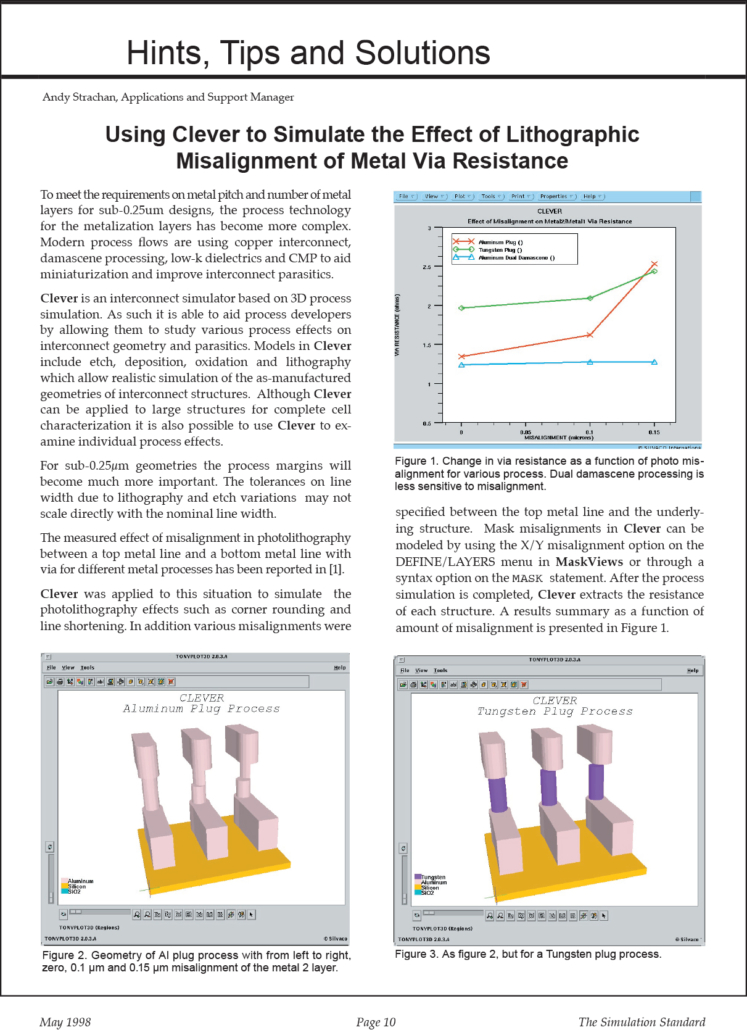
HINTS AND TIPS – May 1998
How can anti-reflective coatings be modeled when simulating photodetectors in ATLAS/Luminous? How can detection efficiency be plotted?
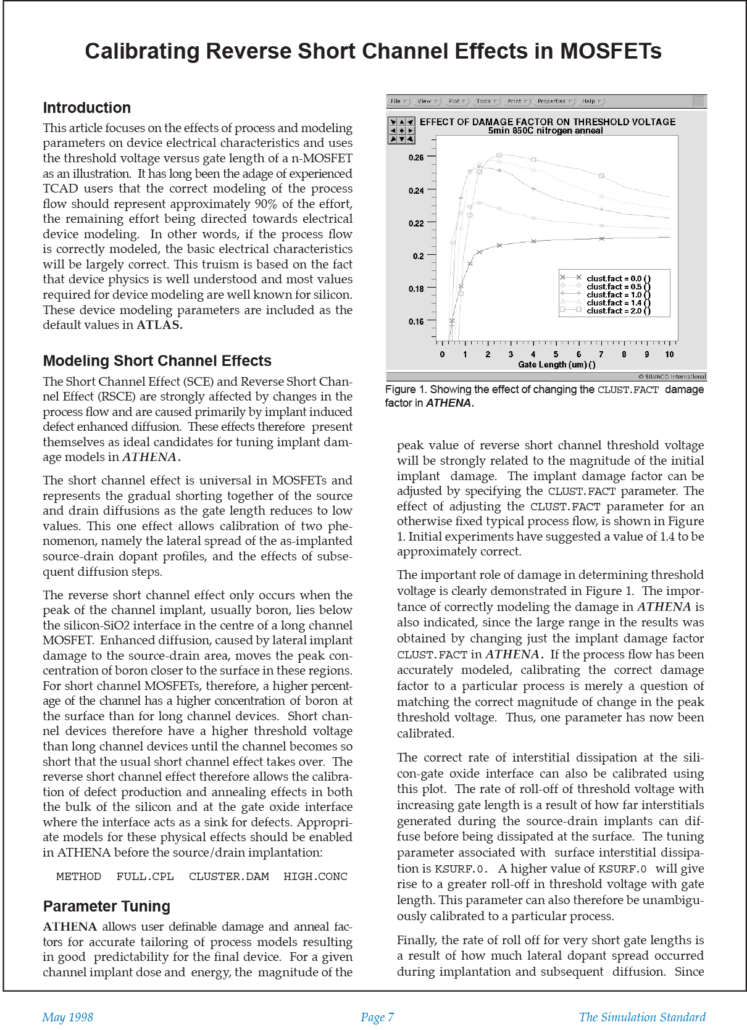
Calibrating Reverse Short Channel Effects in MOSFETs
This article focuses on the effects of process and modeling parameters on device electrical characteristics and uses the threshold voltage versus gate length of a n-MOSFET as an illustration.
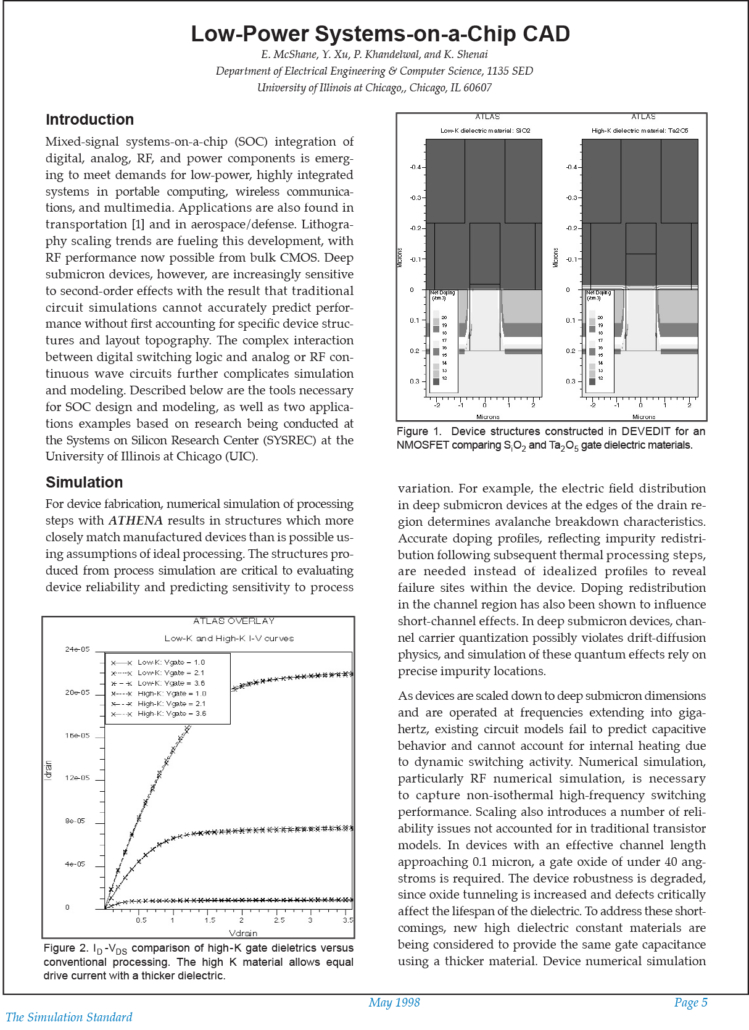
Low-Power Systems-on-a-Chip CAD
Mixed-signal systems-on-a-chip (SOC) integration of digital, analog, RF, and power components is emerging to meet demands for low-power, highly integrated systems in portable computing, wireless communications, and multimedia.
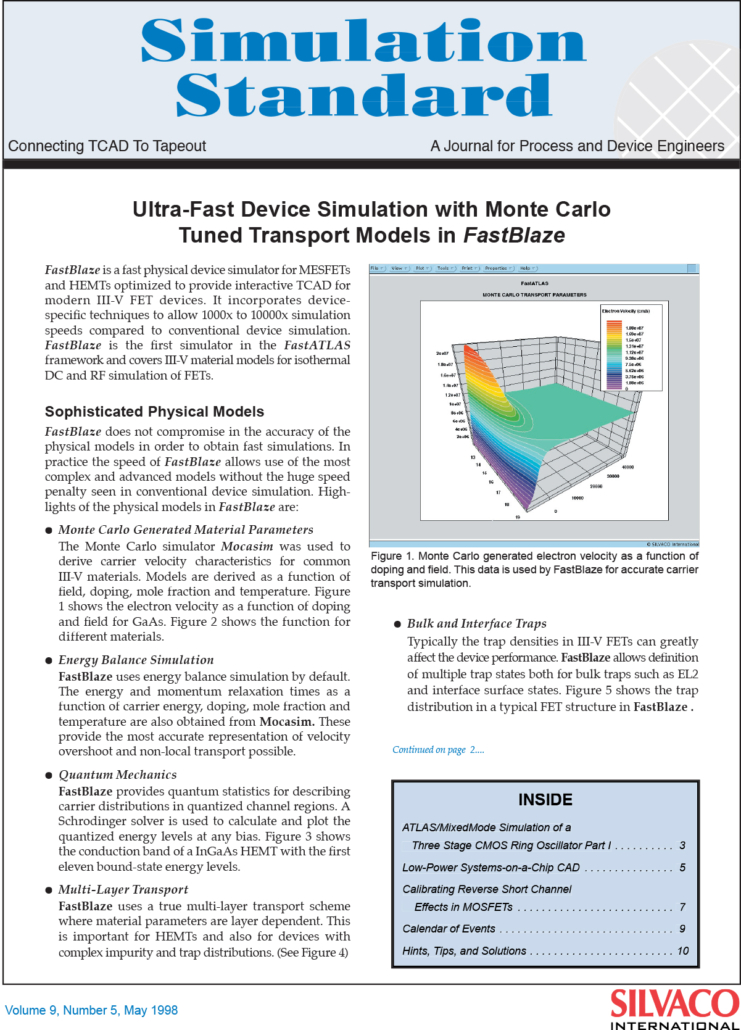
Ultra-Fast Device Simulation with Monte Carlo Tuned Transport Models in FastBlaze
FastBlaze is a fast physical device simulator for MESFETs and HEMTs optimized to provide interactive TCAD for modern III-V FET devices. It incorporates device-specific techniques to allow 1000x to 10000x simulation speeds compared to conventional device simulation.
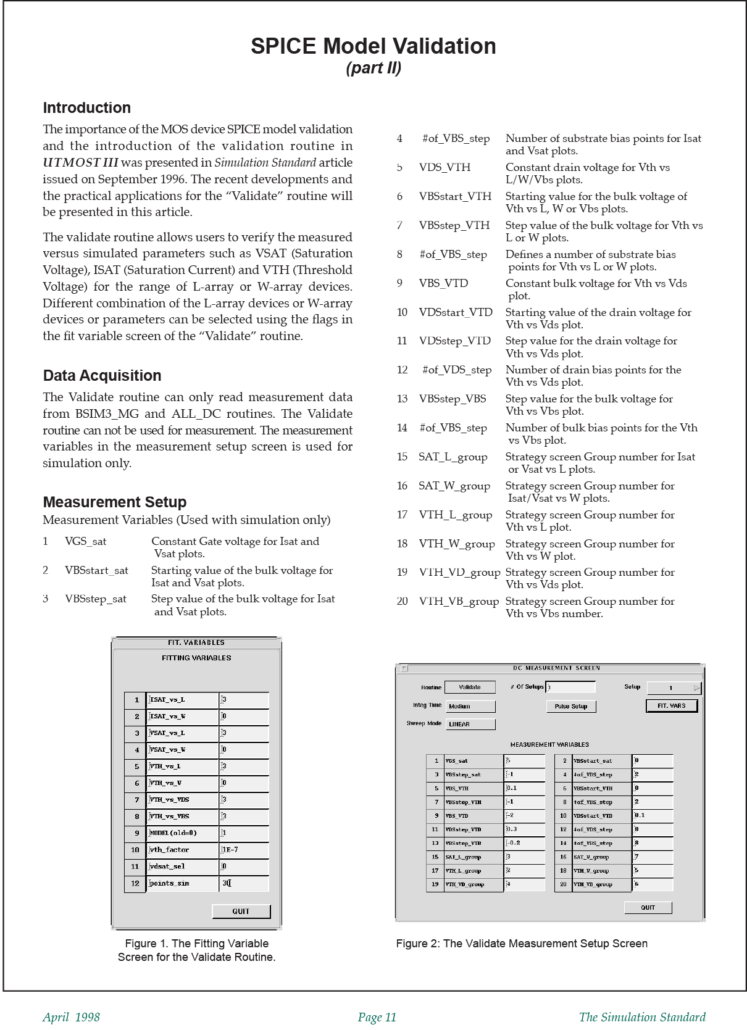
HINTS & TIPS – April 1998
Q. What is the typical method of measuring flicker noise using S3245A Noise Amplifier?

SPICE Model Validation
The importance of the MOS device SPICE model validation and the introduction of the validation routine in UTMOST III was presented in Simulation Standard article issued on September 1996. The recent developments and the practical applications for the "Validate" routine will be presented in this article.

